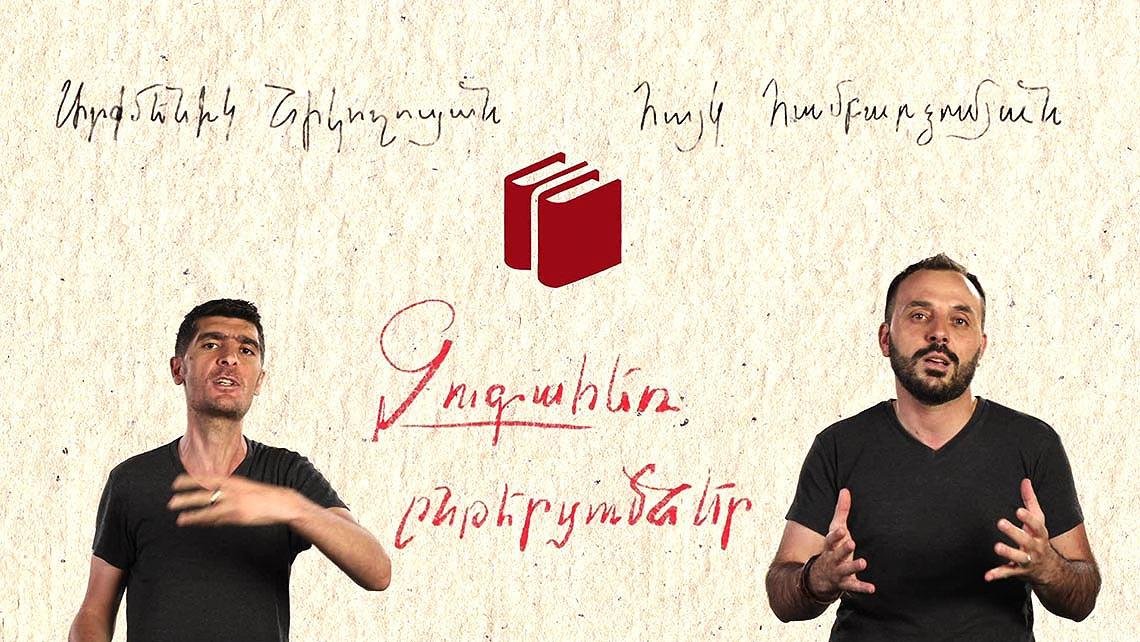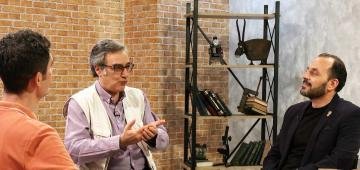
Literary critics Hayk Hambardzumyan and Arkmenik Nikoghosyan debate on the most famous, popular, and at the same time controversial works of Armenian classical and world literature. Each discussion is dedicated to one literary work, the debate of the literary critics presents the possibilities of its traditional and new perception.
 |
Hrant Matevosyan: I am the master of my time, part 2Starting from Hrant Matevosyan's first works, the elimination of the perception of the owner of his country and land, as well as time, is key from within the human being, from the Armenian person. How do Matevosyan's heroes respond to this situation, what solutions does the author offer? The "Parallel Readings" program discusses literary critics Hayk Hambardzumyan, Arkmenik Nikoghosyan, and writer and publicist Gevorg Ter-Gabrielyan. |
 |
Hrant Matevosyan: I am the master of my time, part 1In many of Hrant Matevosyan's works, one can encounter the idea of owning the land, the country, and time. Who is the owner according to the prose writer, what does it mean to be the owner of time, what is the writer's responsibility or obligation towards his time? The "Parallel Readings" program features discussions with literary critics Hayk Hambardzumyan, Arkmenik Nikoghosyan, and writer and publicist Gevorg Ter-Gabrielyan. |
 |
Khachik Dashtents' novel "The Call of the Ranch Dancers"The main characters of Khachik Dashtents' novel "The Call of the Ranch Dancers" are leaders of the national liberation movement: Zoravar Andranik, Gevorg Chaush, Aghbyur Serob, Makhluto and others, and the story is woven around the heroic and unbreakable spirit of the people. The 115th anniversary of Khachik Dashtents' birth is approaching, and literary critics Hayk Hambardzumyan and Arkmenik Nikoghosyan discuss the author's famous novel on the "Parallel Readings" program. |
 |
World dramaturgy in Armenian: who is the addressee?In recent years, there has been great activity in translating world drama into Armenian. Moreover, many of the playwrights are being performed in Armenian for the first time. At the same time, Armenian theaters do not seem to be using these translations. Why is world drama translated, for the reader or for the theater? These questions are discussed in the program “Parallel Readings” by literary critics Hayk Hambardzumyan, Arkmenik Nikoghosyan, and translator, film critic Zaven Boyajyan. |
 |
Around one story: Aghasi Ayvazyan, "Kirakos"Aghasi Ayvazyan's story "Kirakos", which tells about tragedy and humanity, conscience and hope, although it is one of the author's early works, summarizes the main ideas of his work. Who is Kirakos, what does he have to do with conscience, what are the messages of the story? Literary critics Hayk Hambardzumyan and Arkmenik Nikoghosyan discuss these questions in the program "Parallel Readings". |
 |
The psychological portrait of little MherLittle Mher is the most mysterious character in the national epic "Sasna Tsrer", allowing for the most diverse readings. In addition to mythological, artistic, and philosophical interpretations, the psychological analysis of the character of Little Mher is noteworthy. In the program "Parallel Readings", literary critics Hayk Hambardzumyan, Arkmenik Nikoghosyan, and psychologist Aram Khachatryan discuss the psychological peculiarities of the perception of the formation of this hero. |
 |
The literary legacy of Khrimyan HayrikKhrimyan Hayrik's activities as a clergyman and as Catholicos of All Armenians have been highly appreciated and revered by his contemporaries and future generations. One of the most important aspects of this activity is Khrimyan Hayrik's literary legacy, which is discussed in the "Parallel Readings" program by literary critics Hayk Hambardzumyan and Arkmenik Nikoghosyan. |
 |
Letter to the SaviorMovses Khorenatsi in his work "History of the Armenians" presents the correspondence between King Abgar of Edessa and Jesus Christ. This remarkable motif is also known from other Armenian and foreign sources and finds its new expression in Armenian literature of the later period. In the program "Parallel Readings", literary scholars Hayk Hambardzumyan and Arkmenik Nikoghosyan discuss the topic of the correspondence between the king and the Savior. |
 |
When Saying Armenia: The Homeland in Hamo Sahyan's PoetryHamo Sahyan's poems dedicated to Armenia are especially unique. What elements and symbols make up Sahyan's Armenia? Is he writing about historical Armenia or Soviet Armenia? How do landscapes complete the image of the homeland? Literary critics Hayk Hambardzumyan and Arkmenik Nikoghosyan discussed these issues on the "Parallel Readings" program. |
 |
I'll see Ani and then die, part 2How does the perception of Ani change over time: from a world-famous city to a sinful and cursed city? How is the city of Ani perceived in modern times: as a symbol of past glories or of statehood in general? The “Ani” originals of Armenian literature were discussed in the “Parallel Readings” program by literary critics Hayk Hambardzumyan and Arkmenik Nikoghosyan. |
 |
I'll see Ani and then die, part 1Ani, the famous capital of Bagratid Armenia, has been represented in Armenian literature in a variety of ways. The "Ani" originals of Armenian literature are discussed by literary critics Hayk Hambardzumyan and Arkmenik Nikoghosyan in the "Parallel Readings" program. |
 |
Ghazaros Aghayan, writer and educatorThis year marks the 185th anniversary of the birth of writer, educator, and publicist Ghazaros Aghayan. Literary critics Hayk Hambardzumyan and Arkmenik Nikoghosyan discuss the writer's literary and pedagogical activities in the "Parallel Readings" program. |
